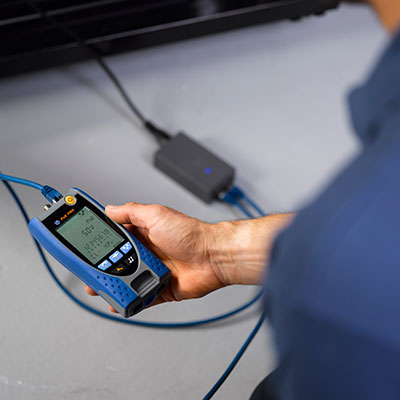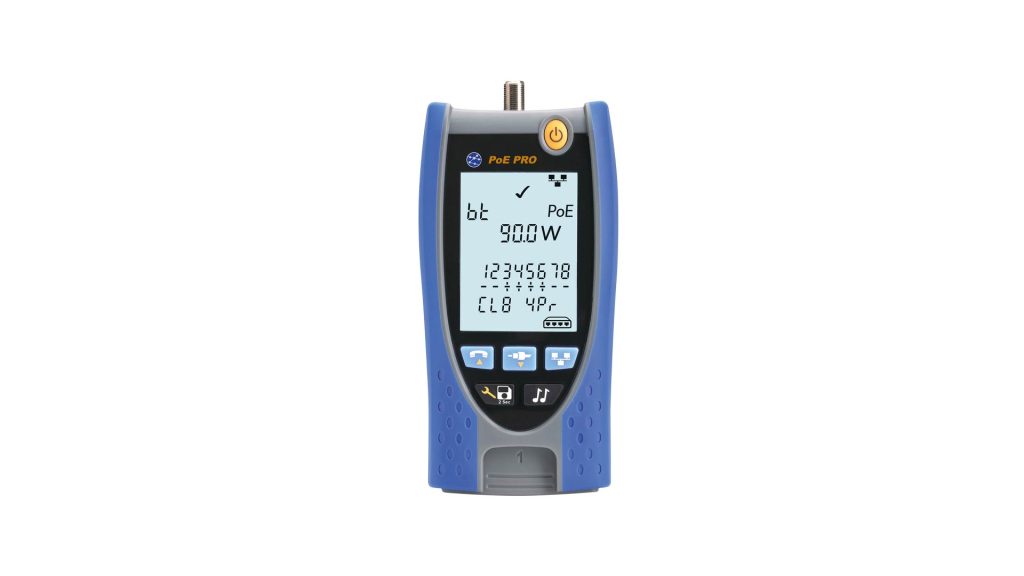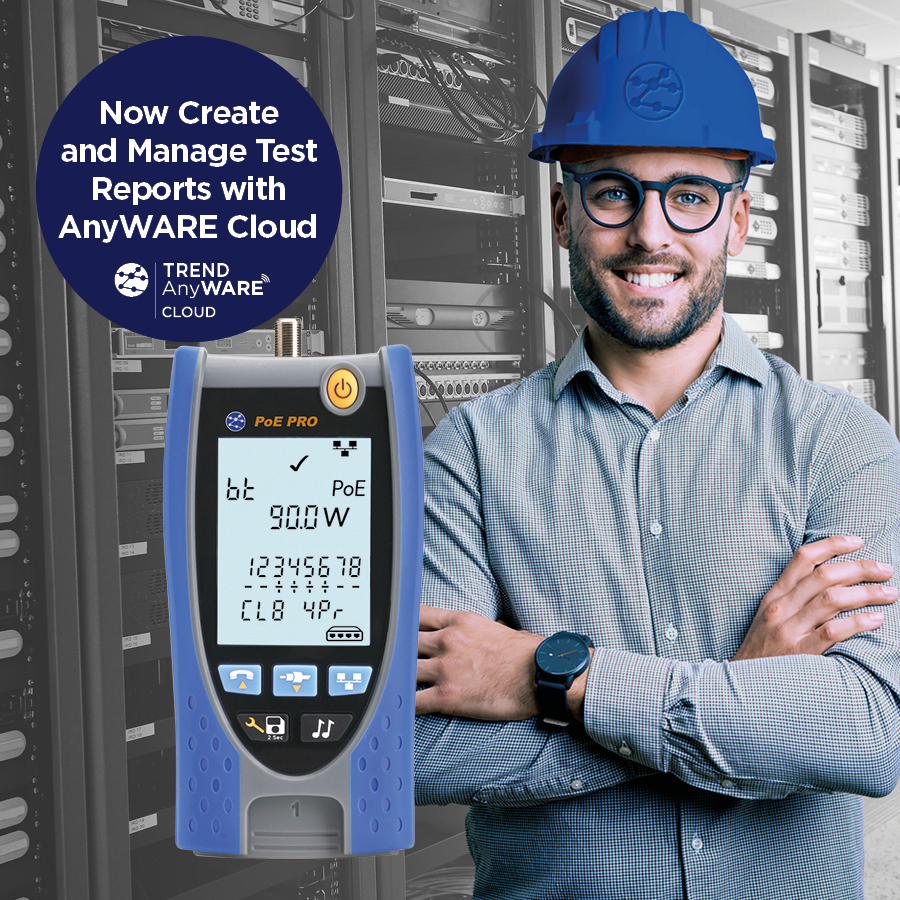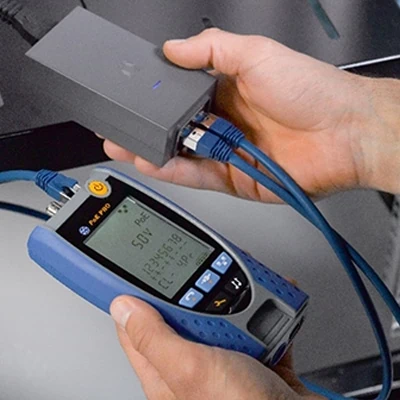How to troubleshoot PoE problems on VoIP or CCTV
Whether it’s a problem with a phone, camera, lighting, access control or any other device, whatever the PoE issue, the fundamentals of troubleshooting PoE remain the same. Here’s how to troubleshoot PoE easily.
First of all, you need to follow these five simple steps:
- Ensure you’re using PoE specific equipment
- Check the device works
- Check the device has enough power
- Check the switch or injector has enough power
- Check the cable quality
Let’s put these steps into the context of two common scenarios that you may encounter when installing or fixing common PoE devices such as VoIP phones or IP CCTV.
Troubleshoot a VoIP phone that isn’t working
If a VoIP phone goes down, there is a standard process to follow to diagnose the problem.
Unplug it and plug in another phone that is working. If that works, then it’s an issue with the device, and not the network.
If it doesn’t work, take a measurement with a suitable PoE tester such as PoE Pro from TREND Networks to see if enough power is being provided to the phone. If not enough power is getting to the device, then the electrician will need to check the power source – either the switch or the injector.
Once at the power source, perform a measurement to see if the power being delivered is enough for the device. If the power at source appears sufficient, then the reason the phone isn’t working will be due to cable length or attenuation, and this will need to be addressed.
If you’re at the injector and find that it is not providing enough power, replacing this so the right amount of power is delivered may solve the problem.
However, if the power source is a switch, troubleshooting is slightly different. If there is not enough power this is often an indication that the port is incorrectly configured and has been set with too low a capacity. To troubleshoot this, the switch will need to be reconfigured with the right power budget for the device. This may fall on the electrician to do, by plugging in their laptop, but is more likely to require a phone call to a network manager who can make the change and get the phone up and running.
Troubleshoot an IP CCTV camera stuck in boot cycle
When IP CCTV cameras boot up, they ordinarily run through a test of all their extended functions, such as Pan-Tilt-Zoom, heaters, or wipers. During this process, the camera is likely to draw a lot more power than required for its normal operation.
If this extra power is not available, CCTV cameras can become stuck in a continual boot cycle, switching off and starting again.
So, even though with an initial PoE measurement it may appear that the cable meets the standard and provides enough power, it could be that there simply is not enough to manage these peaks.
To troubleshoot this, you should measure how much power the CCTV camera requires during start up. Then, use a PoE verifier to test the maximum power draw possible at its location on the network. If there is not enough power available, then the power source, such as the switch, will need to be reconfigured to ensure it has a suitable capacity for start-up, as well as normal usage requirements.
Making PoE troubleshooting simple
If you want to get up to speed with common PoE troubleshooting practices and master the use of the relevant test equipment, talk to the experts at TREND Networks to arrange a PoE Pro demo now.





